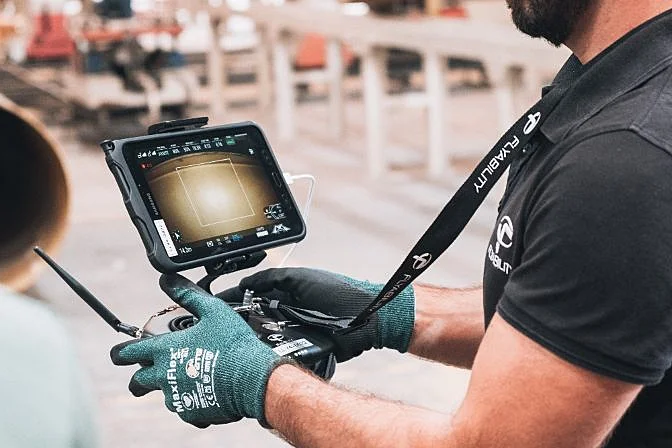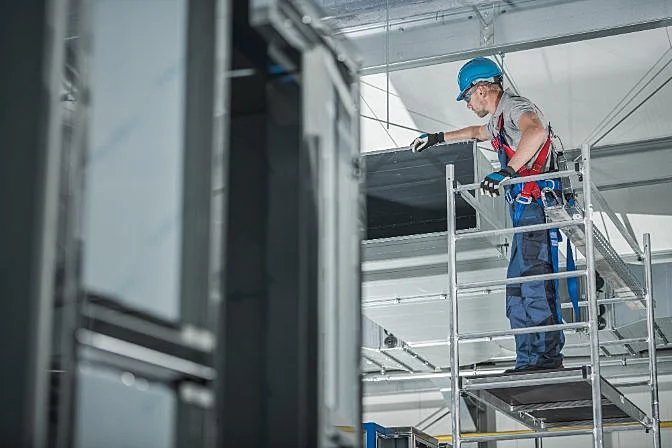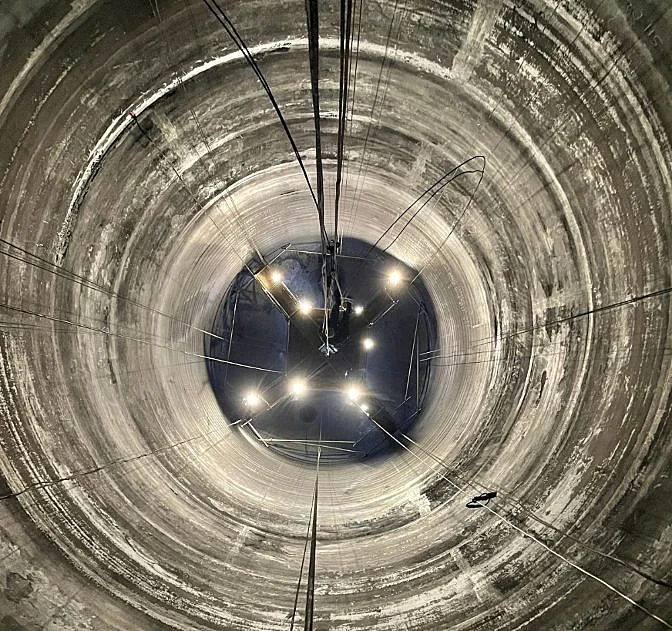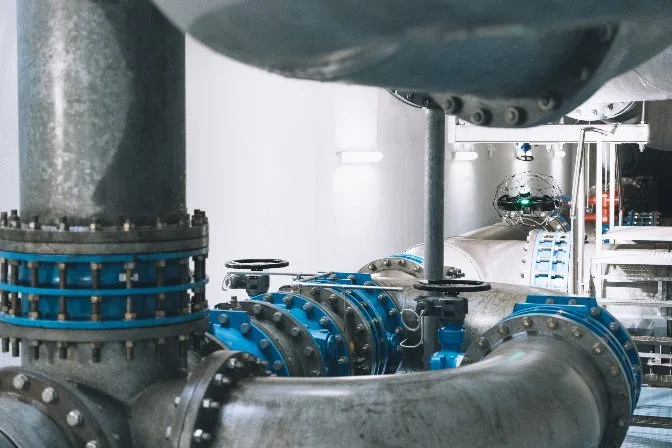What Is an Internal Inspection?
Internal inspection refers to the process of examining the internal structure or components of a piece of equipment, facility, or asset. It is a critical part of the overall inspection process, often conducted alongside external inspections to ensure that every aspect of the asset is thoroughly evaluated.
Internal inspections are sometimes referred to as interior or inner inspections. They are used to assess the condition of the internal parts of an asset and to detect any potential issues that may need further attention, such as cracks, corrosion, or wear.
Traditionally, internal visual inspections required inspectors to enter confined spaces manually, which could be dangerous and time-consuming. However, with advancements in technology, remote solutions like drones and robotics have made it possible for inspectors to gather data without entering hazardous environments. For example, Flyability’s indoor drones can safely navigate tight spaces and provide high-quality visual data from inside tanks, boilers, and other complex structures.

These inspections help maintain the integrity and safety of industrial assets, preventing failures that could lead to costly downtime or even accidents. In addition to visual checks, inspectors may also use non-destructive testing (NDT) methods to collect more detailed data during internal inspections.
[Internal inspections are just one area where NDT is applied. To learn more about NDT and its various applications, check out our full guide on the subject.]
Ways To Conduct An Interior Inspection
There are several common methods used to perform interior inspections, depending on the nature of the asset and the environment:
- Using scaffolding
- Rope access
- Remote Visual Inspection (RVI) tools
All these methods aim to allow inspectors to gather accurate and reliable data about the internal condition of an asset. Each has its own advantages and limitations, and they can often be combined to achieve the best results.
With scaffolding and rope access, inspectors physically enter the space to conduct their assessment. In contrast, RVI tools like drones or robots allow inspectors to remain outside while collecting visual data remotely.
Scaffolding
Scaffolding is a temporary structure built to give inspectors access to hard-to-reach areas within an asset. While this method has been widely used in the past, it is often considered the most expensive and time-consuming option. The process involves setting up and dismantling the scaffolding, which can cause significant downtime and increased costs.

Despite its drawbacks, scaffolding remains a viable option for certain types of inspections. However, many companies are now exploring alternative methods to reduce costs and improve efficiency.
Discover more about scaffolding and its role in inspection processes in our detailed guide.
Internal Rope Access
Internal rope access is a technique used by trained professionals to inspect high or confined areas. This method is especially useful in industrial settings where direct access is limited or unsafe. Certified rope access technicians use specialized equipment and ropes to move safely inside large structures such as pressure vessels, boilers, and stacks.

This approach allows inspectors to get close to defects and perform minor maintenance tasks while staying safe. Although less costly than scaffolding, it requires skilled personnel to ensure the work is done correctly and efficiently.
Learn more about rope access and how it's used in modern inspection practices.
Remote Visual Inspection Tools
Remote Visual Inspection (RVI) tools, such as drones and robotic systems, are becoming increasingly popular for internal inspections. These tools allow inspectors to collect visual data without entering potentially dangerous environments. Drones like Flyability’s Elios 3 are designed specifically for navigating confined spaces, making them ideal for inspecting tanks, sewers, and other challenging locations.
 The Elios 3 performing an inspection at a water department
The Elios 3 performing an inspection at a water department
By using RVI tools, companies can save time and money, avoid unnecessary downtime, and improve worker safety. Additionally, these technologies often reduce insurance costs by minimizing the need for human entry into hazardous areas.
Explore more about inspection tools and their growing importance in the industry.
Three Questions Inspectors Must Answer When Conducting Internal Inspections
During internal inspections, inspectors typically seek to answer three key questions using non-destructive testing (NDT) methods:
1. Are there any defect(s) in the asset?
The first step in any internal inspection is to identify whether there are any defects present. Inspectors document all findings and maintain a detailed record of the asset’s condition over time. This helps track changes and ensures that potential issues are addressed before they escalate.
2. Where are the defect(s) located?
Locating defects can be challenging, especially when using remote tools like drones. In environments without GPS signals—such as underground tunnels or industrial facilities—inspecting the exact location of a defect becomes more difficult. To overcome this, inspectors may use barometric measurements, blueprints, or reference points from video footage to map out the position of the issue.
New software, such as Flyability’s Inspector 3.0, provides a sparse point cloud that helps visualize the exact location of defects, making it easier for teams to coordinate repairs and maintenance.
3. What are the dimensions of the defect(s)?
Knowing the size and extent of a defect is crucial for determining the appropriate course of action. This information helps maintenance crews decide whether the defect needs immediate repair, ongoing monitoring, or further inspection. Accurate measurements are essential for planning and executing effective maintenance strategies.
Industries & Assets That Require Internal Inspections
Internal inspections are vital across a wide range of industries, particularly in sectors where safety and operational reliability are paramount. Even small defects can lead to major failures if left unchecked, posing risks to both personnel and infrastructure.
Some of the industries that commonly require internal inspections include:
- Aerospace
- Agriculture
- Chemicals
- Construction
- Manufacturing
- Maritime
- Mining
- Oil & Gas
- Pipeline
- Power & Utilities
- Public Safety
Common assets that undergo internal inspections include:
- Boilers
- Coke ovens
- Grain bins
- Mines
- Pressure vessels
- Pipelines
- Sewers
- Stacks
- Tanks
- Wind turbines
Regular internal inspections help prevent costly failures, ensure compliance with safety standards, and extend the lifespan of critical infrastructure. As technology continues to evolve, the use of advanced tools like drones and robotics is playing an increasingly important role in making these inspections safer and more efficient.
22 Galvanized Iron Binding Wire,Hot dipped galvanized steel wire,16 gauge galvanized metal wire
Shandong Jianlong Special Steel Co., Ltd. , https://www.jianlongsteelpipe.com
![<?echo $_SERVER['SERVER_NAME'];?>](/template/twentyseventeen/skin/images/header.jpg)